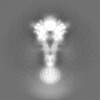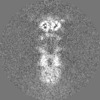登録情報 データベース : EMDB / ID : EMD-28725タイトル Cryo-EM structure of 4 insulins bound full-length mouse IR mutant with physically decoupled alpha CTs (C684S/C685S/C687S; denoted as IR-3CS) Symmetric conformation Cryo-EM structure of 4 insulins bound full-length mouse IR mutant with physically decoupled alpha CTs (C684S/C685S/C687S; denoted as IR-3CS) Symmetric conformation 複合体 : Cryo-EM structure of 4 insulins bound full-length mouse IR mutant with physically decoupled alpha CTs (C684S/C685S/C687S; denoted as IR-3CS) Symmetric conformationタンパク質・ペプチド : Insulin receptorタンパク質・ペプチド : Insulin / / 機能・相同性 分子機能 ドメイン・相同性 構成要素
/ / / / / / / / / / / / / / / / / / / / / / / / / / / / / / / / / / / / / / / / / / / / / / / / / / / / / / / / / / / / / / / / / / / / / / / / / / / / / / / / / / / / / / / / / / / / / / / / / / / / / / / / / / / / / / / / / / / / / / / / / / / / / / / / / / / / / / / / / / / / / / / / / / / / / / / / / / / 生物種 Mus musculus (ハツカネズミ) / Homo sapiens (ヒト)手法 / / 解像度 : 3.7 Å Li J / Wu JY / Hall C / Bai XC / Choi E 資金援助 Organization Grant number 国 National Institutes of Health/National Institute of General Medical Sciences (NIH/NIGMS) R01GM136976 National Institutes of Health/National Institute of General Medical Sciences (NIH/NIGMS) R35GM142937
ジャーナル : Elife / 年 : 2022タイトル : Molecular basis for the role of disulfide-linked αCTs in the activation of insulin-like growth factor 1 receptor and insulin receptor.著者 : Jie Li / Jiayi Wu / Catherine Hall / Xiao-Chen Bai / Eunhee Choi / 要旨 : The insulin receptor (IR) and insulin-like growth factor 1 receptor (IGF1R) control metabolic homeostasis and cell growth and proliferation. The IR and IGF1R form similar disulfide bonds linked ... The insulin receptor (IR) and insulin-like growth factor 1 receptor (IGF1R) control metabolic homeostasis and cell growth and proliferation. The IR and IGF1R form similar disulfide bonds linked homodimers in the apo-state; however, their ligand binding properties and the structures in the active state differ substantially. It has been proposed that the disulfide-linked C-terminal segment of α-chain (αCTs) of the IR and IGF1R control the cooperativity of ligand binding and regulate the receptor activation. Nevertheless, the molecular basis for the roles of disulfide-linked αCTs in IR and IGF1R activation are still unclear. Here, we report the cryo-EM structures of full-length mouse IGF1R/IGF1 and IR/insulin complexes with modified αCTs that have increased flexibility. Unlike the -shaped asymmetric IGF1R dimer with a single IGF1 bound, the IGF1R with the enhanced flexibility of αCTs can form a -shaped symmetric dimer with two IGF1s bound. Meanwhile, the IR with non-covalently linked αCTs predominantly adopts an asymmetric conformation with four insulins bound, which is distinct from the -shaped symmetric IR. Using cell-based experiments, we further showed that both IGF1R and IR with the modified αCTs cannot activate the downstream signaling potently. Collectively, our studies demonstrate that the certain structural rigidity of disulfide-linked αCTs is critical for optimal IR and IGF1R signaling activation. 履歴 登録 2022年10月29日 - ヘッダ(付随情報) 公開 2022年11月9日 - マップ公開 2022年11月9日 - 更新 2024年11月6日 - 現状 2024年11月6日 処理サイト : RCSB / 状態 : 公開
すべて表示 表示を減らす
 データを開く
データを開く 基本情報
基本情報
 マップデータ
マップデータ 試料
試料 キーワード
キーワード 機能・相同性情報
機能・相同性情報
 Homo sapiens (ヒト)
Homo sapiens (ヒト) データ登録者
データ登録者 米国, 2件
米国, 2件  引用
引用 ジャーナル: Elife / 年: 2022
ジャーナル: Elife / 年: 2022
 構造の表示
構造の表示 ダウンロードとリンク
ダウンロードとリンク emd_28725.map.gz
emd_28725.map.gz EMDBマップデータ形式
EMDBマップデータ形式 emd-28725-v30.xml
emd-28725-v30.xml emd-28725.xml
emd-28725.xml EMDBヘッダ
EMDBヘッダ emd_28725.png
emd_28725.png emd-28725.cif.gz
emd-28725.cif.gz emd_28725_half_map_1.map.gz
emd_28725_half_map_1.map.gz emd_28725_half_map_2.map.gz
emd_28725_half_map_2.map.gz http://ftp.pdbj.org/pub/emdb/structures/EMD-28725
http://ftp.pdbj.org/pub/emdb/structures/EMD-28725 ftp://ftp.pdbj.org/pub/emdb/structures/EMD-28725
ftp://ftp.pdbj.org/pub/emdb/structures/EMD-28725 emd_28725_validation.pdf.gz
emd_28725_validation.pdf.gz EMDB検証レポート
EMDB検証レポート emd_28725_full_validation.pdf.gz
emd_28725_full_validation.pdf.gz emd_28725_validation.xml.gz
emd_28725_validation.xml.gz emd_28725_validation.cif.gz
emd_28725_validation.cif.gz https://ftp.pdbj.org/pub/emdb/validation_reports/EMD-28725
https://ftp.pdbj.org/pub/emdb/validation_reports/EMD-28725 ftp://ftp.pdbj.org/pub/emdb/validation_reports/EMD-28725
ftp://ftp.pdbj.org/pub/emdb/validation_reports/EMD-28725 リンク
リンク EMDB (EBI/PDBe) /
EMDB (EBI/PDBe) /  EMDataResource
EMDataResource マップ
マップ ダウンロード / ファイル: emd_28725.map.gz / 形式: CCP4 / 大きさ: 103 MB / タイプ: IMAGE STORED AS FLOATING POINT NUMBER (4 BYTES)
ダウンロード / ファイル: emd_28725.map.gz / 形式: CCP4 / 大きさ: 103 MB / タイプ: IMAGE STORED AS FLOATING POINT NUMBER (4 BYTES) 試料の構成要素
試料の構成要素

 Homo sapiens (ヒト)
Homo sapiens (ヒト) Homo sapiens (ヒト)
Homo sapiens (ヒト) 解析
解析 試料調製
試料調製 電子顕微鏡法
電子顕微鏡法 FIELD EMISSION GUN
FIELD EMISSION GUN
 ムービー
ムービー コントローラー
コントローラー



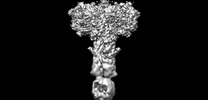







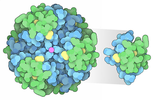

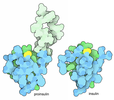
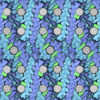









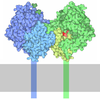
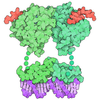
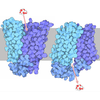
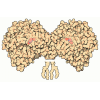


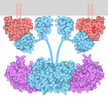

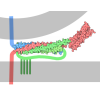
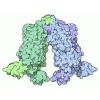
 Z (Sec.)
Z (Sec.) Y (Row.)
Y (Row.) X (Col.)
X (Col.)






















